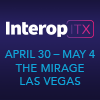Like it or not, intent-based networking has become the top buzzword in the industry. While software-defined networking used to dominate conversations in networking, today vendors and practitioners are talking about intent-based networking, and debating its promise of fully automated networks.
Incorporating machine learning and analytics, intent-based networking is touted as revolutionary technology that fundamentally transforms networking to support cloud adoption and digital initiatives. But some, including networking guru Ivan Pepelnjak, have dismissed it as marketing spin.
The buzz around intent-based networking kicked into high gear last summer after Cisco unveiled its intuitive network strategy. Others, notably startups such as Apstra, were already talking about intent-based networking, which Andrew Lerner, research VP at Gartner, had identified six months earlier as the "next big thing" in networking.
So what is intent-based networking? At a high level, it generally means a system in which the end user describes what the network should do and the system automatically configures what's needed to carry out that intent, or policy. IBN systems use declarative statements -- what the network should do – rather than imperative statements that describe how it should be done, Dan Conde, senior analyst at Enterprise Strategy Group, told me in an interview. A declarative statement could say, for example, that certain systems should be kept separate from other systems, and the system figures out how to do that, he said.
The goal is to use a graphical user interface and get away from time-consuming, tedious device-by-device configuration using CLI, as well as the scripts that some networking pros use for network automation, Conde said. "It's not a revolution that will happen overnight. It will take a few years to be realized," he said.
Indeed, intent-based networking is very much an emerging area. While Gartner set out clear requirements for IBN, others hesitate to draw such clear lines. IDC describes it generally as leveraging "machine learning, cognitive computing, and deep analytics capabilities to provide greater levels of programmability, automation, and security integration while reducing time spent on manual network configuration and management." But the firm hasn't defined the elements that constitute intent-based networking because the architecture is still high level and covers a broad swath, from data centers to campus networks, Rohit Mehra, VP of network infrastructure at IDC, told me.
"It's going to be a mix of wired and wireless infrastructure, and definitely a control element that has intelligence to make automated decisions," about bandwidth, QoS, and security, he said.
Mehra describes intent-based networking as built on SDN principles, but implying more power to the enterprise IT user by aligning the network with business goals. Automation is key, he said.
"We're all looking for automation in this day and age, when IT resources are scarce. We need to rise up to more strategic tasks, rather than the mundane job of looking at packets and trying to figure out what's going wrong with my network," he said.
Conde said a handful of vendors, including both startups and established networking suppliers, take various approaches to intent-based networking. Cisco takes a broad approach, while companies like Veriflow have a narrower take. Juniper Networks, meanwhile, tends to favor a different term: the self-driving network. There are also some emerging startups such as Itential and Waltz Networks.
"They are all trying to achieve the same goal," Conde said. "Networking pros can't ignore it."
Here's a look at a few vendors that play in this emerging space.
(Image: chombosan/Shutterstock)

Learn how enterprise networks must adapt to meet the needs of today’s technology-centric businesses. Attend the Network Transformation Summit at Interop ITX, April 30-May 4, 2018. Register now!














